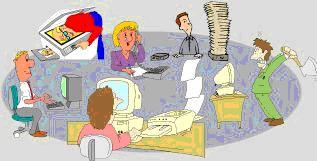Lesson 1: Introduction

In the workplace there is an expectation that you will be safe from injury or disease. Health and safety in the workplace is known as either workplace health and safety (WHS) or occupational health and safety (OHS)
There are both Commonwealth and State laws that legislate what employers and employees must do to ensure workplaces are healthy and safe. These laws reflect the commitment of governments and unions to promoting health and safety in the workplace.
However, in spite of this, many people suffer or sometimes die from work-related injuries or diseases each year in Australia. The Division of Workplace Health and Safety, provides the following statistics:
Key work health and safety statistics:
- In 2007–08, there were 134 835 workers' compensation claims for serious1 work-related injuries or illnesses. This equates to an incidence rate of 13.8 serious claims per 1000 employees.
- Preliminary data for 2008–09 show there were 128 735 serious workers' compensation claims, which equates to 13.0 serious claims per 1000 employees. While the final number of accepted claims for this year is likely to be around 3% higher, this will still represent an improvement from 2007–08.
- Male employees experienced nearly twice the rate of serious injury or disease compared with female employees.
- Incidence rates of serious workers' compensation claims increase with employee age.
- The highest incidence rates were recorded by Labourers & related workers, nearly three times the rate for all occupations.
- The Agriculture forestry & fishing; Transport & storage and Manufacturing industries recorded the highest incidence rates of all industries, all with nearly twice the rate for all industries.
- A typical serious workers' compensation claim involves four weeks absence from work.
- One-quarter of serious claims require 12 or more weeks off work.
- One in four serious claims involved the use of non-powered handtools or equipment.
- One in five serious claims involved an injury to the back.
- The Australian Bureau of Statistics' Work Related Injury Survey showed 53 out of every 1000 workers experienced an injury or illness in the workplace in 2009–10. However, half of these incidents involved less than one day or shift absent from work.
- Work related injury and illness were estimated to cost $57.5 billion in the 2005–06 financial year. This represented 5.9% of GDP.
In the next lesson, you will learn about:
- Legislation related to occupational health and safety
- The rights and responsibilities of employees and employers in relation to occupational
health and safety - Occupational health and safety legislation
Listen to the ABC newsreport (Jan '08) and Sixty Minutes Wake up call and contribute your ideas to the "wiki" (What is a wiki?) (Text version)
Current data 2010 (stats report)
Listen to the Sixty minutes report (Jan '08) and contribute your ideas to the "wiki" (What is a wiki?).
Wake-Up Call
(large video files)
Wiki question: "Young workers between the ages of 15 and 24 have the highest incidence of WHS accidents during their first month on the job. After listening to the ABC newsreport and Sixty Minutes Wake-up call, you are to post your thoughts on why this occurs. Give reasons to support your statement" (approx 100words)